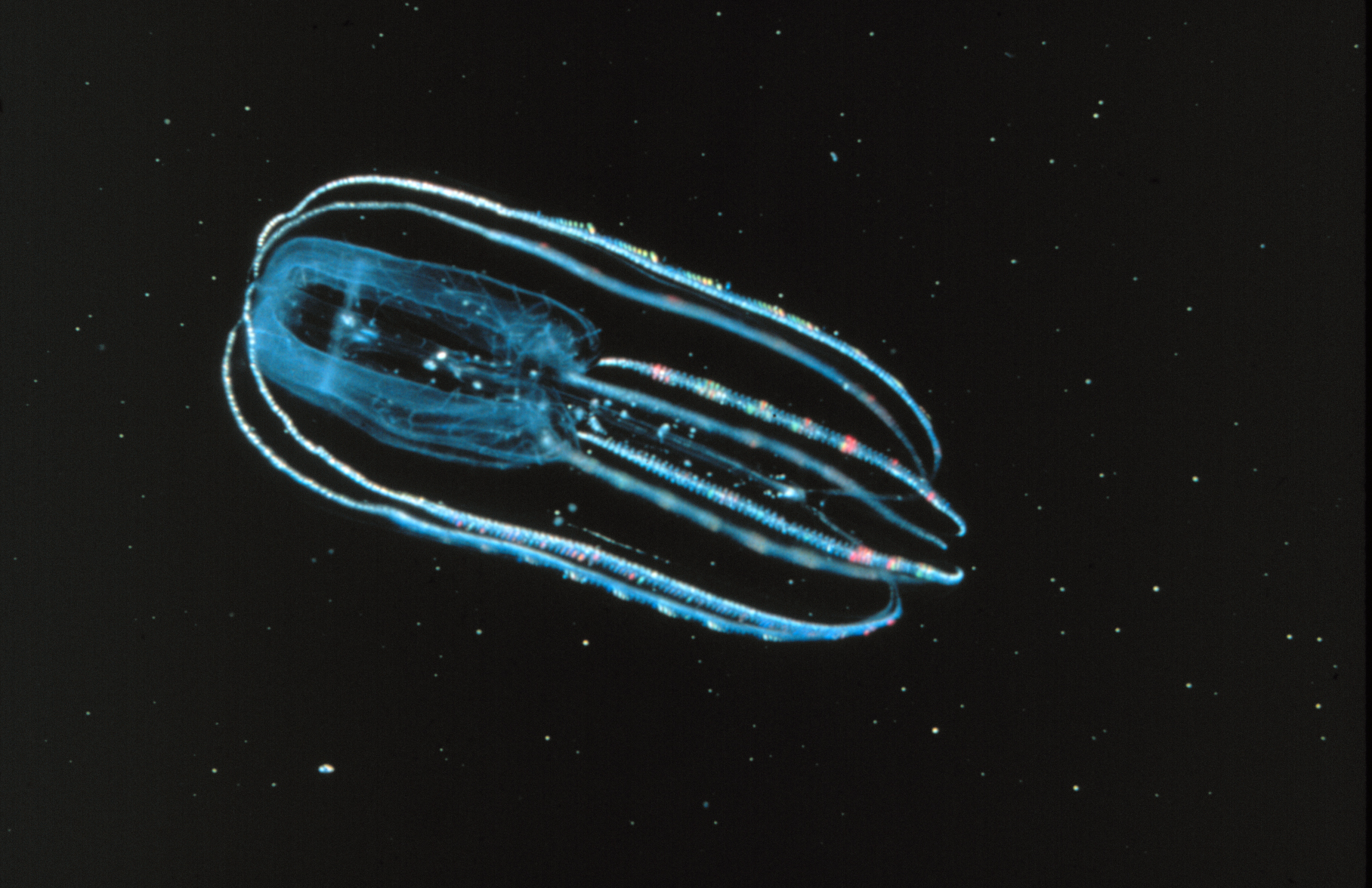Lobata Incertae Sedis on:
[Wikipedia]
[Google]
[Amazon]
 Lobata is an order of Ctenophora in the class
Lobata is an order of Ctenophora in the class
 Lobata is an order of Ctenophora in the class
Lobata is an order of Ctenophora in the class Tentaculata
Tentaculata is a class of comb jellies. The common feature of this class is a pair of long, feathery, contractile tentacles, which can be retracted into specialised ciliated sheaths. In some species, the primary tentacles are reduced and they h ...
with smaller tentacles than other ctenophores, and distinctive flattened lobes extending outwards from their bodies.
They grow up to about long.
Anatomy
The lobates have a pair of lobes, which are muscular, cuplike extensions of the body that project beyond the mouth. Their inconspicuous tentacles originate from the corners of the mouth, running in convoluted grooves and spreading out over the inner surface of the lobes (rather than trailing far behind, as in theCydippida
Cydippida is an order of comb jellies. They are distinguished from other comb jellies by their spherical or oval bodies, and the fact their tentacles are branched, and can be retracted into pouches on either side of the pharynx. The order is not ...
). Between the lobes on either side of the mouth, many species of lobates have four auricles, gelatinous projections edged with cilia that produce water currents that help direct microscopic prey toward the mouth. This combination of structures enables lobates to feed continuously on suspended planktonic prey.
Lobates have eight comb-rows, originating at the aboral pole and usually not extending beyond the body to the lobes; in species with (four) auricles, the cilia edging the auricles are extensions of cilia in four of the comb rows. Most lobates are quite passive when moving through the water, using the cilia on their comb rows for propulsion, although ''Leucothea'' has long and active auricles whose movements also contribute to propulsion. Members of the lobate genera
Genus ( plural genera ) is a taxonomic rank used in the biological classification of living and fossil organisms as well as viruses. In the hierarchy of biological classification, genus comes above species and below family. In binomial nomenclat ...
''Bathocyroe
''Bathocyroe'' is a genus of ctenophore
Ctenophora (; ctenophore ; ) comprise a phylum of marine invertebrates, commonly known as comb jellies, that inhabit sea waters worldwide. They are notable for the groups of cilia they use for swimm ...
'' and ''Ocyropsis
Ocyropsis is a genus of Ctenophores, which are commonly known as Comb Jellies. Ocyropsis belong to the family of Ocyropsidae. Ocyropsis possesses two large lateral muscular lobes and four auricles, and appear pale and translucent in color. Ocyropsi ...
'' can escape from danger by clapping their lobes, so that the jet of expelled water drives them backwards very quickly.
Unlike cydippids, the movements of lobates' combs are coordinated by nerves rather than by water disturbances created by the cilia, and combs on the same row beat together rather than in Mexican wave style. This may have enabled lobates to grow larger than cydippids and to have shapes that are less egg-like.
An unusual species first described in 2000, ''Lobatolampea tetragona
Lobatolampeidae is a family of ctenophores belonging to the order Lobata
Lobata is an order of Ctenophora in the class Tentaculata with smaller tentacles than other ctenophores, and distinctive flattened lobes extending outwards from their b ...
'', has been classified as a lobate, although the lobes are "primitive" and the body is medusa-like when floating and disk-like when resting on the sea-bed.
External links
{{Taxonbar, from=Q149121 Tentaculata